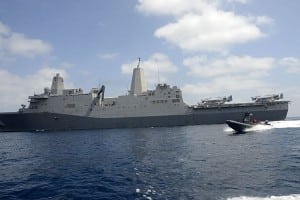
If given additional funding, the Navy could speed up its construction plan for its newest amphibious vessel and award a contract in 2019, but moving any quicker than that could harm the maturity of the ship’s design, the service’s top acquisition executive said Wednesday.The Navy currently plans to begin procurement of the LX(R) amphibious ship, which will replace Whidbey Island- and Harpers Ferry-class dock landing ships, in fiscal year 2020. That’s already a year earlier than originally planned due to…













